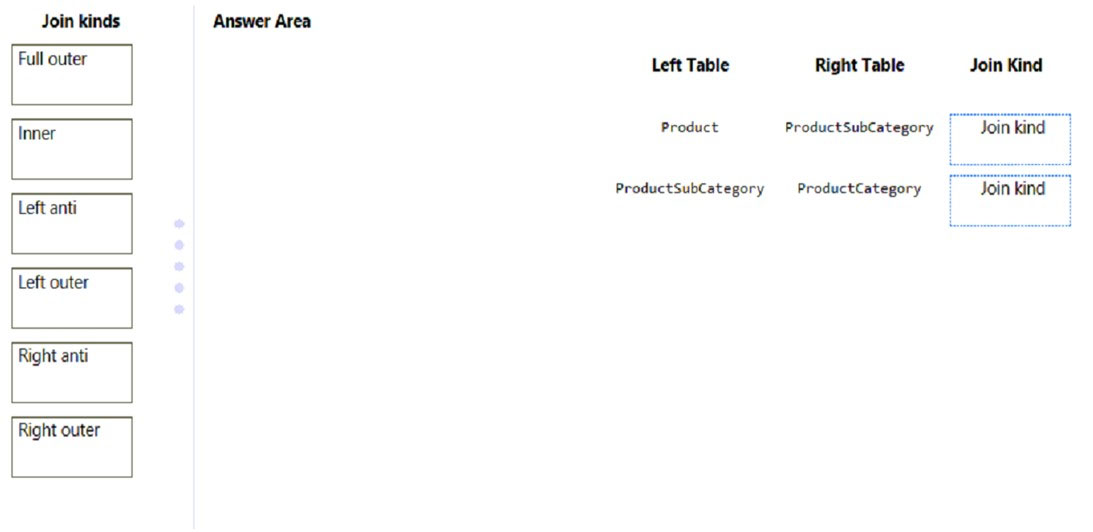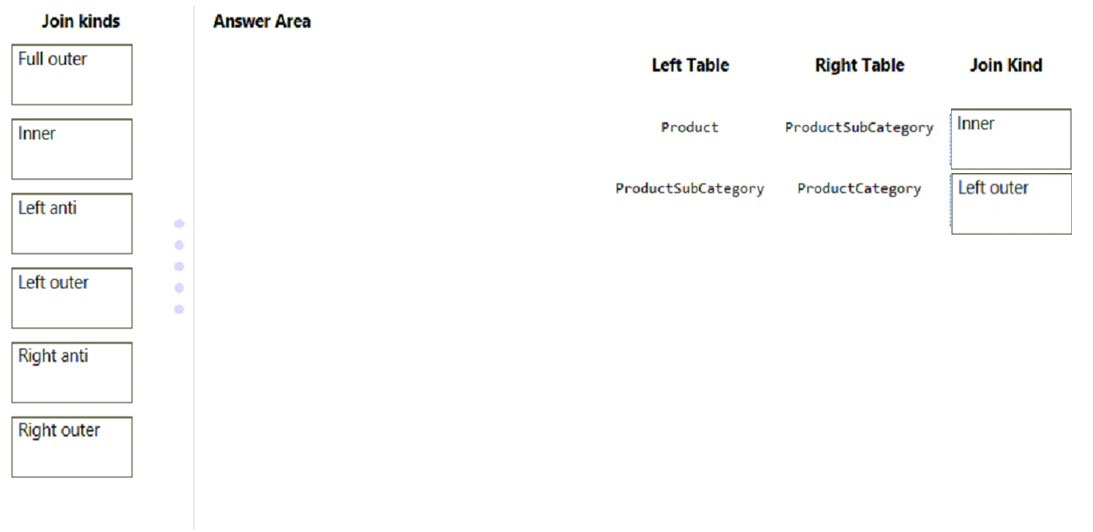
Expert Verified, Online, Free.

DRAG DROP -
In Power Query Editor, you have three queries named ProductCategory, ProductSubCategory, and Product.
Every Product has a ProductSubCategory.
Not every ProductsubCategory has a parent ProductCategory.
You need to merge the three queries into a single query. The solution must ensure the best performance in Power Query.
How should you merge the tables? To answer, drag the appropriate merge types to the correct queries. Each merge type may be used once, more than once, or not at all. You may need to drag the split bar between panes or scroll to view content.
NOTE: Each correct selection is worth one point.
Select and Place:

learnazureportal
Highly Voted 1 year, 7 months agofred92
Highly Voted 1 year, 6 months agoNevilleV
1 year, 6 months agofred92
1 year, 6 months agoBooster21
1 year, 4 months agobbshu0801
4 months agoJohnChung
3 months, 4 weeks agob7c21a9
Most Recent 1 month agoVras
2 months agouser28272615
2 months, 2 weeks agopaocard
2 months, 3 weeks agoAI20
3 months agopowerbot9000
3 months, 1 week agonatattack
4 months, 2 weeks agomustafadev
5 months, 1 week agoTrustMyAnswers
5 months, 3 weeks agomarcolapo92
7 months, 1 week agoPocu
7 months, 2 weeks agoIgetmyrole
7 months, 3 weeks agozdgjn
8 months agozdgjn
8 months agoMoxieTT
9 months, 3 weeks ago